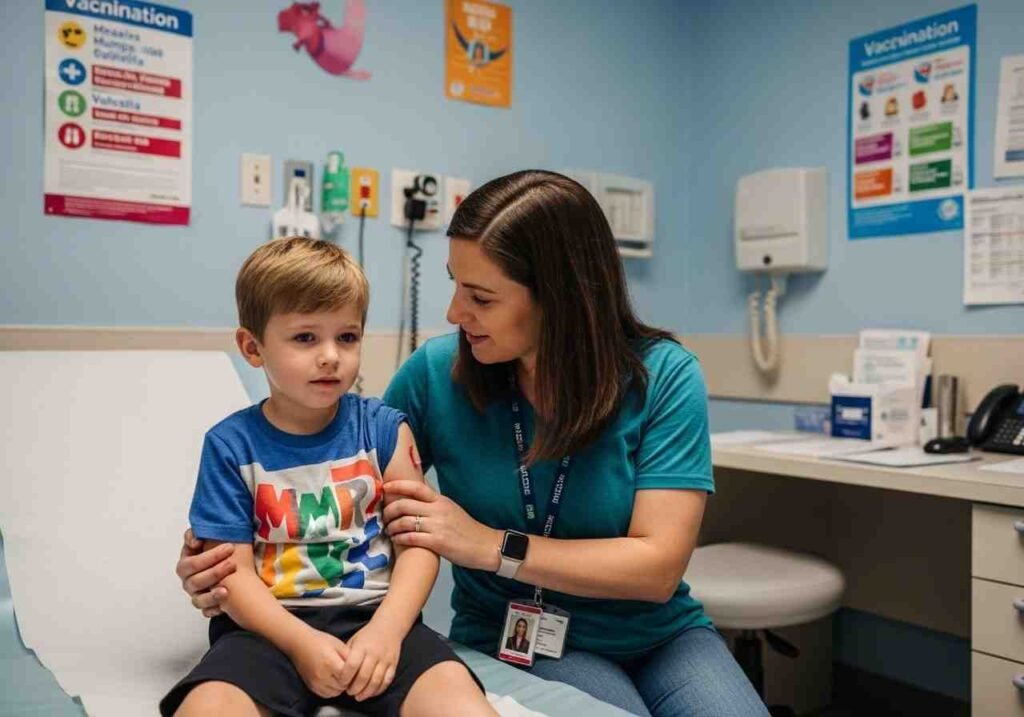MMRV Vaccines:
Nowadays, MMRV vaccines are considered very important for children’s health and disease prevention. Because the most important thing in the world is health. MMRV vaccine is a combined shot that includes MMR vaccine (measles, mumps, rubella) and varicella (chickenpox), which are effective against infections in the body. According to CDC vaccines guidelines, this immunization proves effective in protecting children from serious infections. The CDC Vaccine Advisory Committee has also considered it a part of the routine immunizations schedule.

1. What is MMRV Vaccine
The MMRV vaccine is a single injection that protects children from four serious diseases – measles, mumps, rubella, and varicella – and helps them fight off the illness. Previously, these diseases required separate shots, but now, with the MMRV vaccine, protection is provided in a single dose and helps them fight off the illness. This is a significant benefit to people.
2. When Did the MMRV Vaccine Come Out
The MMRV vaccine was first approved by the FDA in 2005. Subsequently, following CDC vaccine recommendations, it was included in children’s immunization schedules. Since its subsequent distribution to the public, millions of children have been protected from infection with this vaccine.
3. MMRV Vaccine Age
MMRV vaccine age:The MMRV vaccine is given to children in two doses, depending on their age.
- First dose: 12 to 15 months of age.
- Second dose: 4 to 6 years of age.
- This schedule is based on the guidelines of the CDC Vaccine Advisory Committee and provides children with proper immunity before they start school.

4. Rash from MMRV Vaccine
5. MMRV Vaccine Side Effects
Like all vaccines, MMRV vaccines can have some side effects. The most common side effects are:
- Mild pain or swelling at the injection site
- Mild fever
- Fatigue
- Irritability
- In rare cases, a seizure or allergic reaction may occur, but this is very uncommon.

6. Is MMRV a Live Vaccine
Yes, the MMRV vaccine is a live attenuated vaccine. This is no surprise. This means it uses weakened forms of live viruses so that the child’s body can recognize them and build immunity, but they don’t cause disease. This is why it’s considered an essential part of the CDC immunization schedule, and it’s crucial for children.